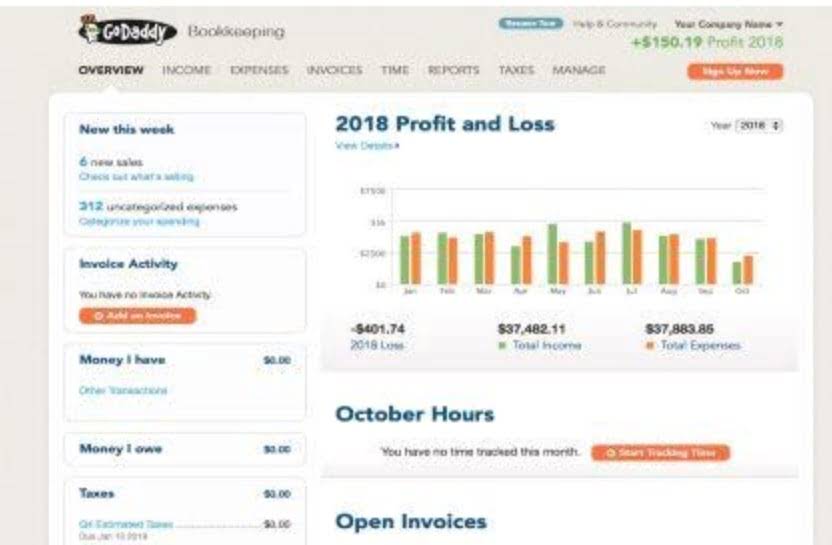
The business will have to pay $12,000 in interest for that year, which, in many jurisdictions, can be deducted from the taxable income. This shows how financial leverage can help maximize potential profits if used correctly. Because of the risks of using leverage, it’s important to compare the advantages and disadvantages and determine whether financial leverage truly makes sense for your financial circumstances and goals. Financial leverage is important as it creates opportunities for investors and businesses. That opportunity comes with high risk for investors because leverage amplifies losses in downturns.

So, a risk-return combination must be chosen that maximizes shareholders’ wealth. Through these measures, companies can minimize risk and maximize profitability in a volatile economy. This means managing a balance between equity and debt, with consideration for the cost of each type of capital.
How much leverage is too much?
Typically, a company’s capital structure is a blend of both debt and equity. Financial leverage falls under the umbrella of debt financing, which companies often use as a lever to ratchet up their buying power, fund strategic growth initiatives, or fuel operations. Moreover, a lot of uncertainty surrounds financial leverage due to its dependency on profitability and return on investment. If a company’s returns are not as high as expected or if the company incurs losses, then financial leverage can magnify these losses and financially strain the company. One potential pitfall is the amplified risk of financial distress and bankruptcy.
Hedge funds can also leverage their assets by financing their portfolio with the cash proceeds of short-selling. If they are hesitant to use these instruments, then they can take its benefits indirectly by investing in companies that usually use debt to finance their operations. In a business where there are low barriers to entry, revenues and profits are more likely to fluctuate than in a business with high barriers to entry. The fluctuations in revenues may easily push a company into bankruptcy since it will be unable to meet its rising debt obligations and pay its operating expenses. With looming unpaid debts, creditors may file a case at the bankruptcy court to have the business assets auctioned in order to retrieve their owed debts.
How is Financial Leverage Measured?
At the end of the year, the investor will have made a $100 return (10% of $1,000) from the investment, from which he will subtract the $50 cost of borrowing (5% of $1,000). Without leverage, the investor would have made a $0 gain since they didn’t have the $1,000 initial capital. Whether a company is leveraging too much (or not enough) is dependent on several factors, including the industry and age of the company.
A higher debt ratio, and thus more leveraging, may provide the potential for greater returns on equity due to the use of borrowed capital. Moreover, businesses with high leverage ratios tend to be more vulnerable to economic downturns. In times of financial stress, these businesses could experience difficulties in meeting their debt payment obligations, thereby heightening the risk of financial insolvency. This situation could result in a dramatic decline in their asset prices, thereby negatively impacting the stock prices. As an example of leverage, if investors buy $1 million of stock and the business then earns $100,000 of profits, their return on investment will be 10%.
Debt to Capitalization Ratio
By studying key financial ratios such as the debt-to-equity ratio, interest coverage ratio, and the times interest earned ratio, a company can adjust its leverage to maintain a healthy financial state. A company’s level of financial leverage can also influence its capacity to meet ethical obligations. Highly leveraged companies might opt for actions aimed primarily at profit maximization, potentially at the expense successful use of financial leverage requires a firm to of ethical considerations. This strategy could pose potential risks including damage to the company’s reputation and loss of trust among stakeholders. In terms of growth and operations, companies often use financial leverage as a strategic tool. This approach positions a company more competitively by helping it gain a larger market share, diversify its product range or enter new geographical markets.
Five ways to drive experience-led growth in banking – McKinsey
Five ways to drive experience-led growth in banking.
Posted: Tue, 02 May 2023 07:00:00 GMT [source]
They measure the proportion of debt in the capital structure and the company’s ability to pay it off. Let us see how the increased use of debt increases the profits for the firm using EBIT-EPS analysis. Leverage may allow a business to make a favorable return on its assets. Businesses have to pay interest on this debt before they take care of any other expenses. If the business does not generate enough profits to cover these interest payments, financial stress can occur, leading to bankruptcy in worst-case scenarios. Let’s take an example of a small business that borrowed $200,000 at an interest rate of 6% annually to expand operations.
The borrowed funds must be repaid, regardless of whether the investment or project was successful or not. If the investment does not perform as expected or if market conditions change, the company or investor may not be able to repay the debt, leading to potential bankruptcy. Fundamental analysts can also use the degree of financial leverage (DFL) ratio. The DFL is calculated by dividing the percentage change of a company’s earnings per share (EPS) by the percentage change in its earnings before interest and taxes (EBIT) over a period. With the higher use of debt, this difference between ROI and the cost of debt increases the earnings per share and creates a situation of favorable financial leverage. Trading on equity increases the profit earned by the equity shareholders due to the presence of fixed financial charges like interest.
- For example, if a public company has total assets valued at $500 million and shareholder equity valued at $250 million, the equity multiplier is 2.0 ($500 million ÷ $250 million).
- Generally, the lender decides the limit of risk, i.e., the limit of leverage he or she is willing to take.
- The total household debt is reported by the Federal Reserve System, while the disposable personal income is reported by the US Department of Commerce, Bureau of Economic Analysis.
- In contrast to equity financing, where capital is raised by offering ownership stake in the company via shares, debt financing is simply about borrowing.
As financial leverage increases, the cost of funds declines because of the increased use of cheaper debt, but the financial risk also increases. Generally, the lender decides the limit of risk, i.e., the limit of leverage he or she is willing to take. Financial leverage refers to the use of debt to finance an asset raised with the intention of amplifying the returns from an investment or project.
